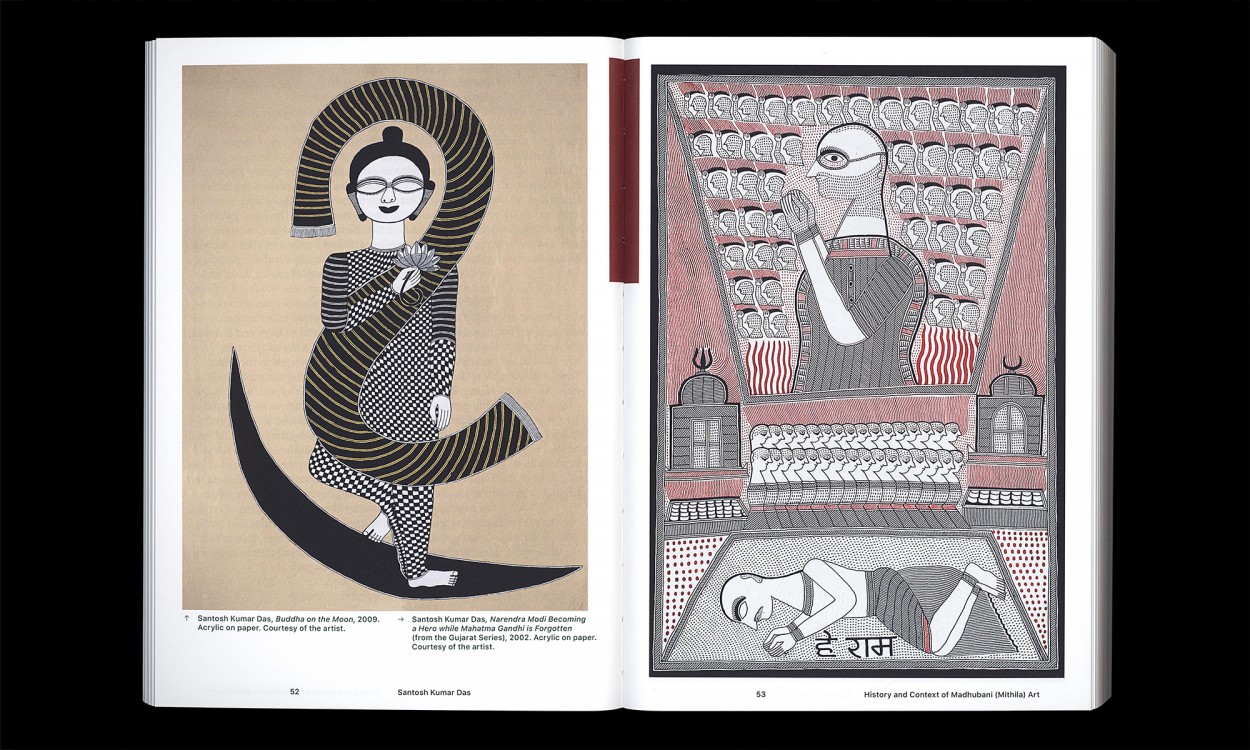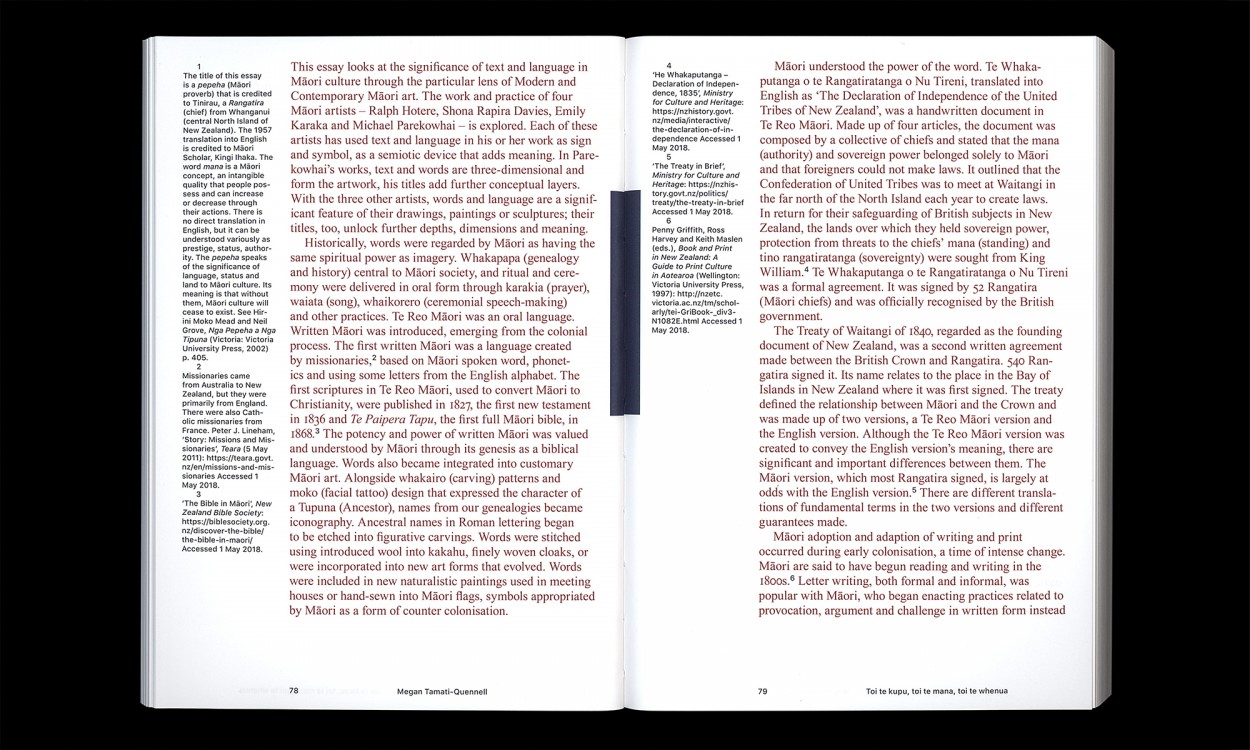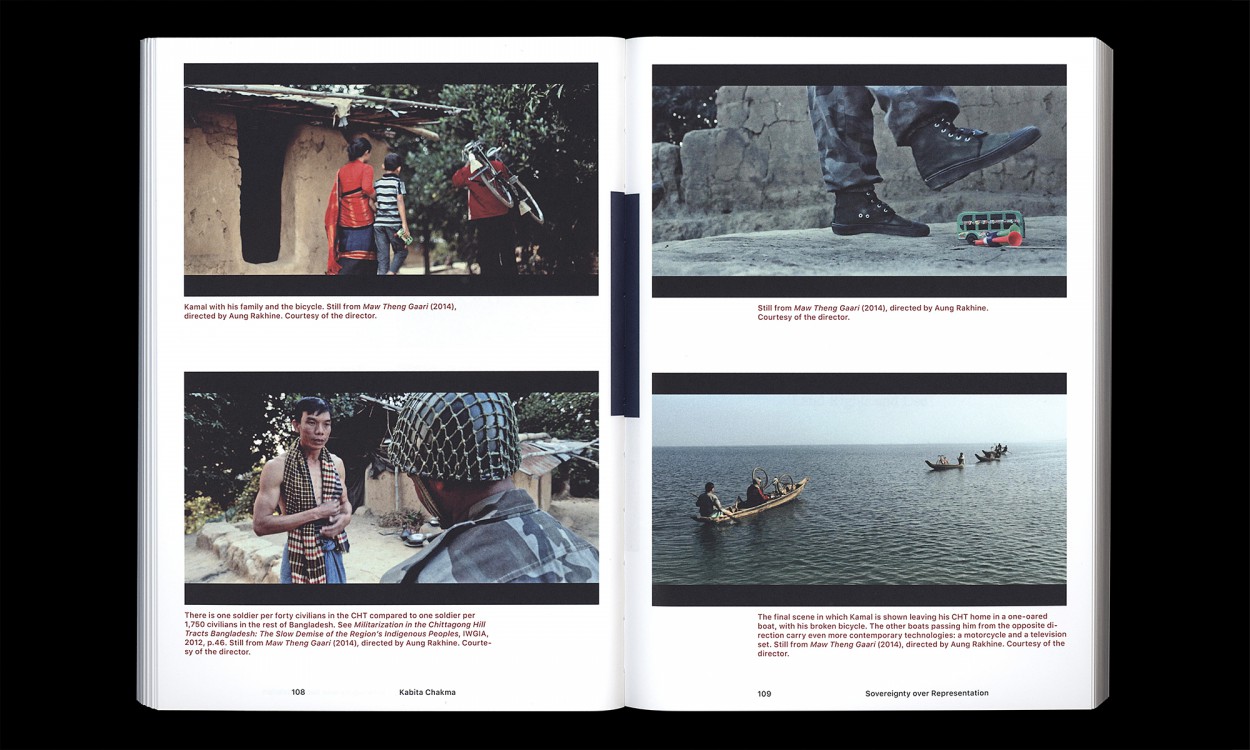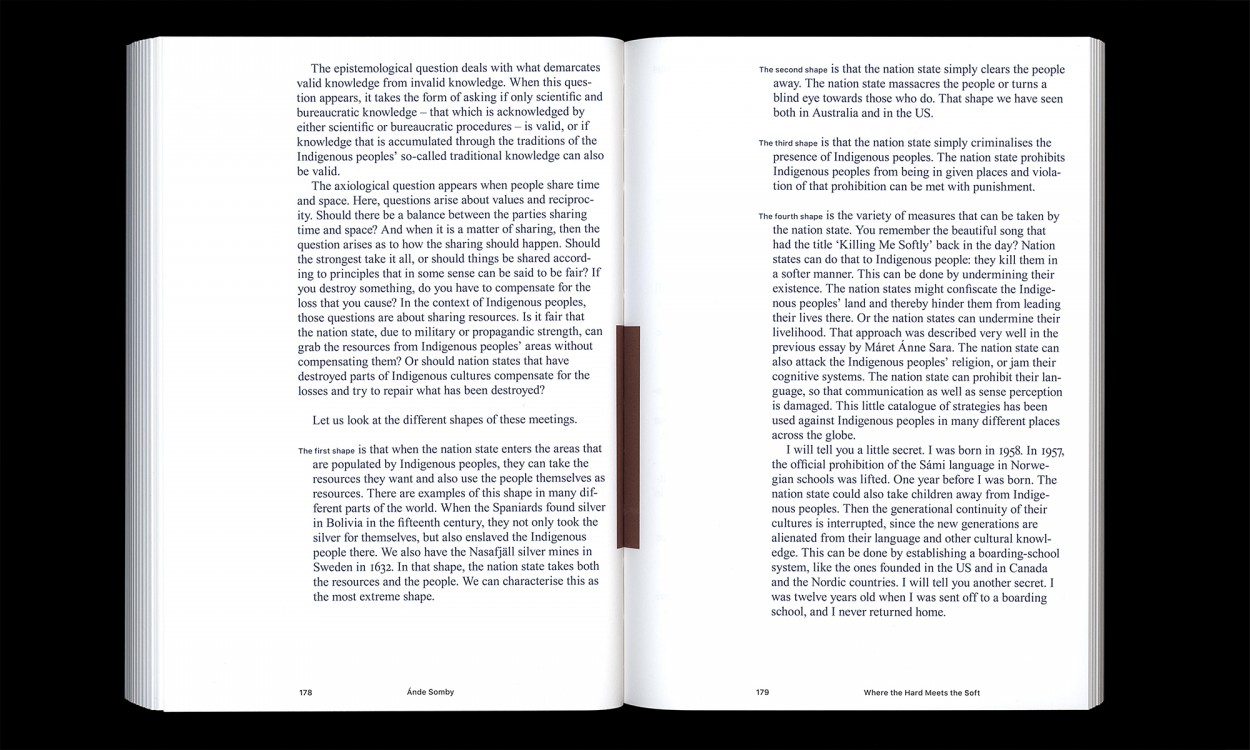Sovereign Words
Indigenous Art, Curation and Criticism

- What will the new histories of the arts of Indigenous practitioners look, feel and sound like?
- Charts perspectives and strategies from across the disciplines of art and film, ethics and history, theory and the museological field, from across four continents
- Shortlisted for the 'Best Book on Contemporary Art'> Richard Schlagman Art Book Award (Sept 2019, Whitechapel Gallery)
Editor: Katya García-Antón
Contributors: Daniel Browning, Kabita Chakma, Megan Cope, Santosh Kumar Das, Hannah Donnelly, Léuli Māzyār Luna’i Eshrāghi, David Garneau, Biung Ismahasan, Kimberley Moulton, Máret Ánne Sara, Venkat Raman Singh Shyam, Irene Snarby, Ánde Somby, Megan Tamati-Quennell, Prashanta Tripura, Sontosh Bikash Tripura, and the OCA contributors: Liv Brissach, Katya García-Antón, Drew Snyder, Nikhil Vettukattil
Design: Hans Gremmen
2018, Valiz with the Office for Contemporary Art Norway (OCA) | authors in this publication first convened for public presentations during OCA’s Critical Writing Ensembles at the Dhaka Art Summit in February 2018, organized with the support of the Dhaka Art Summit 2018, Samdani Art Foundation, Art Space Sydney and the Australian Council for the Arts | 24 x 17 (h x w) | paperback | 288 pp. | English | ISBN 978-94-92095-62-6
In the media:
- Click here to read the article: Piles of Bones by Tessel Janse for Taylor & Francis Online (12 December 2022)
Artists and cultural practitioners from Indigenous communities around the world are increasingly in the international spotlight. As museums and curators race to consider the planetary reach of their art collections and exhibitions, this publication draws upon the challenges faced today by cultural workers, Indigenous and non-Indigenous, to engage meaningfully and ethically with the histories, presents and futures of Indigenous cultural practices and world-views.
Sixteen Indigenous voices convene to consider some of the most burning questions surrounding this field. How will novel methodologies of word/voice-crafting be constituted to empower the Indigenous discourses of the future? Is it sufficient to expand the Modernist art-historical canon through the politics of inclusion? Is this expansion a new form of colonisation, or does it foster the cosmopolitan thought that Indigenous communities have always inhabited? To whom does the much talked-of ‘Indigenous Turn’ belong? Does it represent a hegemonic project of introspection and revision in the face of today’s ecocidal, genocidal and existential crises?
A first of its kind reader of Indigenous voices, Sovereign Words charts perspectives across art and film, ethics and history, theory and the museological field. With the canonical power systems of the international art world increasingly under fire today, the book makes a strong bid for knowledge building and intellectual alliances that will inform the cultural and artistic processes of Indigenous and non-Indigenous futures.
'I am confident that echoes of Sovereign Words: Indigenous Art, Curation and Criticism will assist in strengthening existing collaborations and lead to new and ground-breaking connections where mutual respect and learning will become the norm when exchanging with First Nations ways of life.'
– Brook Andrew, artist and Artistic Director of the 22nd Biennale of Sydney, 2020










